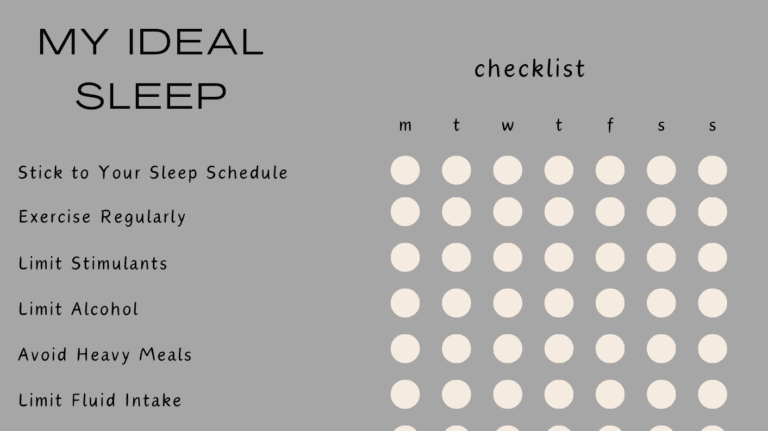How to Fall Asleep Fast: The Military Sleep Method

The Military Sleep Method is a collective term that describes various relaxation and sleep-inducing practices often employed within the military. This technique has been utilised for decades. It helped to reduce stress, promote restful sleep, and enhance performance among US Army soldiers. It works because it helps to induce a peaceful state. Therefore, it is ideal for falling asleep fast. Even under two minutes. Let’s explore the intricacies of this technique and how it may help your sleeping habits.
How Does the Method Work?

The Military Sleep Method is a structured approach designed to fall asleep rapidly, even in difficult environmental conditions. These may include loud noise, bright light or feeling distressed. Essentially, it works as it aids in calming the mind and body, preparing you for a swift transition into sleep.
The method typically involves several stages. Importantly, each stage is designed to create an optimal environment for body and mind relaxation. Let’s look at these stages in more detail.
Stage One: Preparation
The preparation stage involves finding or creating a suitable environment for relaxation. This may include:
Creating the Ideal Environment

Firstly, seek out a quiet, calm, and comfortable space free from distractions. This could be your bedroom or any area where you feel at ease and can minimise external disturbances.
Secondly, aim for a setting resembling a pitch-black room, as darkness often signals the body that it’s time to wind down and rest. If possible, use blackout curtains or an eye mask to block out light if needed.
Thirdly, ensure the room is at a comfortable temperature, as cooler temperatures tend to promote better sleep.
Lastly, turn off electronic devices or limit their use before bedtime. Try to minimise noise or any activities that could disrupt the calmness needed for relaxation.
Prepare your mind

Acknowledge any thoughts or concerns. Doing so, coupled with writing a to-do list for the next day, will offload your mind from the things you need to do. This will help you to stop worrying about forgetting or not completing them.
Stage Two: Controlled Breathing

Begin controlled deep breathing to relax slowly.
Take each deep breath in a deliberate and rhythmic manner. Slowly inhale through the nose, allowing the breath to fill your lungs.
Then, exhale slowly and steadily through the mouth. Ensure that the exhalation phase matches the length of inhalation.
In essence, this balanced breathing pattern will help you regulate the body’s stress response and induce relaxation.
Stage three: Progressive Muscle Relaxation (PMR)

Progressive Muscle Relaxation (PMR) will help you to release tension in your body. You will move through the body systematically, addressing different muscle groups. Here’s a detailed description of how you could do it.
First, deliberately tens and then release tension in specific muscle groups. Start from the forehead muscles. Move downward towards the left leg, right leg, feet or vice versa. Ensure you engage all the muscles in your body.
Then, build up tension in each muscle group by individually tensing them for a few seconds. This tension may feel like a tightness or pressure.
As a result of purposely holding the tension, your muscles will consciously and intentionally relax. This will allow the accumulated stress in your body to dissipate completely. Consequently, your muscles will start feeling loose and calm.
Throughout this process, focus on the physical sensations and the contrast between tension and relaxation within the muscle groups. Ensure you synchronise the release of tension with the exhalation when breathing.
Stage Four: Mindful relaxation

Mindful relaxation is equally important and will allow you to be fully present in the moment. You will drift away from judgment or attachment to passing thoughts and emotions.
Consequently, this technique will help you to create a sense of calm, allowing you to let go of stress or racing thoughts on past concerns or future worries.
Remember to synchronise your mindful relaxation with intentional breathing and the sensations it creates within the body.
Stage Five: Positioning for Sleep

Positioning for sleep within the Military Sleep Method involves adopting specific body postures to facilitate relaxation and a smoother transition into sleep. Here’s how comfortable posture will help you to reduce poor sleep:
First and foremost, the position you choose should ensure your body is aligned and free from tension. It could involve you lying on the back, side, or in a specific arrangement that feels comfortable for you.
Equally important, Choose a mattress and pillow that align with your chosen sleep position. It will give you more comfort and reduce the chances of waking due to discomfort.
Interestingly, some variations of the Military Sleep Method advocate for sleeping on the left side. This position is believed to promote better digestion, circulation, and relaxation. Sleeping on this side may also alleviate pressure on your internal organs, helping deep breathing and encouraging better airflow when sleeping.
The Six Weeks Progression

The Six Weeks Progression within the Military Sleep Method means that if you consistently follow the five stages over six solid weeks, you will master this technique.
Initially, you may focus on learning the basics, such as controlled breathing and muscle relaxation. However, as time progresses, you will adapt more, and you will be able to introduce more intricate elements into your practice.
Through progressive daily training of your body and mind to relax, you will build expertise in this method. As you become more effective, you will be able to adapt it to your own needs. You will fall asleep faster and also enjoy better sleep quality.
Does the Military Sleep Method work?

As of now, there aren’t specific studies supporting that the Military Sleep Method works. However, many people who tried it say it did help them to fall asleep faster and improve the quality of their sleep overall.
For example, a fitness coach, Justin Agustin, in his TikTok video about this method, says that 96% of people who practised this method every night for six weeks have found it effective. I followed up on some comments under the video. Many people said they tried this method, and it worked.
Military Sleep Method Can Impact Your Performance

Notably, this method not only aids in falling asleep fast but can also impact your overall performance positively. This is because the quality and quantity of sleep directly correlate with your cognitive abilities, emotional regulation, and overall physical health. Therefore, applying this method not only ensures a night of rest but potentially enhances daytime performance. Essentially, this can happen in several ways:
You will sharpen your cognitive functions. Better focus, attention, and decision-making are linked to quality sleep. So the better you sleep at night, the better you think during the day.
Furthermore, you will regulate your emotions better. Good night’s sleep is associated with reduced stress, allowing for enhanced emotional resilience and stability. It will positively affect your performance in stressful situations.
In addition, you will improve your physical endurance. You may experience enhanced performance due to well-rested and recovered muscles.
Likewise, you will boost your creativity and problem-solving. Quality sleep (especially in its early stages) is pivotal for creativity and problem-solving abilities. Therefore, mastering the Military Sleep Method may contribute to improved performance, especially in professions that require innovation.
Finally, you will learn and memorise this better. Your well-rested brain will process and consolidate information more effectively. Consequently, better learning retention and memory will positively impact your performance in academic or knowledge-based tasks.
Main Takeaways
Overall, the Military Sleep Method appears to be a promising pathway to attaining a state of relaxation quickly. Moreover, It may help you overcome sleep deprivation.
It capitalises on controlled deep breathing, mindful thinking and systematic muscle relaxation to induce a tranquil state ideal for falling asleep. This method, prised by US army members, will help you to fall asleep quickly.
It is true. Learning this method might feel highly uncomfortable initially, especially if you are unfamiliar with relaxation techniques. However, stick to it. The slow and gradual process of learning this method will ultimately lead you to a state of calm conducive to falling asleep quickly.
What about you? Have you tried this method or similar techniques?
Share your experiences or thoughts with me in the comments below.
May We Suggest

How Many Hours of Sleep Do You Actually Need

Your Ideal Sleep Checklist: Befriending Your Good Night’s Sleep

13 Delicious Foods and Drinks to Promote Better Sleep

How to Fall Asleep Fast: The Military Sleep Method

How To Fall Asleep Fast: 22 Tips To Beat Insomnia

Sleep: A Key to Better Health and Wellbeing











